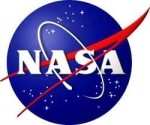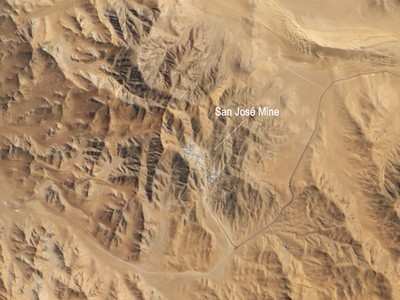Mon, Nov 01, 2010
Recognized By President Obama And Administrator Bolden For
Their Efforts
 NASA usually goes the other way ... that is to say ... up. But
when 33 miners were trapped nearly a half mile below the surface of
the earth, a team of the space agency's employees was called on to
assist in the rescue. Thursday, President Barack Obama welcomed
NASA Administrator Charles Bolden and that NASA team to the Oval
Office for a ceremony that recognized Americans involved in the
rescue.
NASA usually goes the other way ... that is to say ... up. But
when 33 miners were trapped nearly a half mile below the surface of
the earth, a team of the space agency's employees was called on to
assist in the rescue. Thursday, President Barack Obama welcomed
NASA Administrator Charles Bolden and that NASA team to the Oval
Office for a ceremony that recognized Americans involved in the
rescue.
After the White House event, Bolden and Deputy Administrator
Lori Garver presented NASA's Exceptional Achievement Medal to five
agency employees who supported the rescue effort. The NASA
Exceptional Achievement Medal is awarded for a significant,
specific accomplishment or substantial improvement in operations,
efficiency, service, financial savings, science, or technology that
contributes to NASA's mission.
"We're greatly honored by the president's recognition of these
extraordinary NASA employees who assisted the Chilean miners,"
Bolden said. "I'm sure they would be the first to tell you they
were just doing their jobs and nothing out of the ordinary, but the
men and women of NASA do extraordinary things each and every
day."
The medal recipients are:
- Dr. Michael Duncan, deputy chief medical officer at NASA's
Johnson Space Center in Houston and team leader.
- Dr. Albert Holland, operational psychologist at Johnson.
- Dr. James Polk, medical officer at Johnson.
- Clint Cragg, principal engineer for the NASA Engineering and
Safety Center at the Langley Research Center in Hampton, VA.
- Albert Condes, deputy associate administrator of the Office of
International and Interagency Affairs at NASA Headquarters in
Washington,

NASA Satellite Image Of Chilean Mine Site
The employees from Johnson and Langley traveled to Chile Aug. 30
- Sept. 5 and visited the mine after discussions between the
Chilean government and Condes. The team consulted with a number of
organizations in Chile, including the Ministry of Health, Ministry
of Mining, the Chilean Navy and the Chilean Space Agency.
NASA provided technical advice to the Chilean government based
on the agency's long experience in protecting humans in the hostile
environment of space. NASA's initial support included
recommendations on medical care, nutrition and psychological
support. The request for later NASA support was broadened to
include recommendations on the design of a Chilean vehicle used to
extract the miners. Consultations continued between members of the
NASA team and Chilean government officials until the miners were
rescued.
More News
“While legendary World War II aircraft such as the Corsair and P-51 Mustang still were widely flown at the start of the Korean War in 1950, a new age of jets rapidly came to >[...]
Decision Altitude (DA) A specified altitude (mean sea level (MSL)) on an instrument approach procedure (ILS, GLS, vertically guided RNAV) at which the pilot must decide whether to >[...]
Aero Linx: National Aviation Safety Foundation (NASF) The National Aviation Safety Foundation is a support group whose objective is to enhance aviation safety through educational p>[...]
Also: Cal Poly Aviation Club, $$un Country, Arkansas Aviation Academy, Teamsters Local 2118 In response to two recent general aviation accidents that made national headlines, more >[...]
“The FAA is tasked with ensuring our skies are safe, and they do a great job at it, but there is something about the system that is holding up the medical process. Obviously,>[...]
 Aero-News: Quote of the Day (04.28.25)
Aero-News: Quote of the Day (04.28.25) ANN's Daily Aero-Term (04.28.25): Decision Altitude (DA)
ANN's Daily Aero-Term (04.28.25): Decision Altitude (DA) ANN's Daily Aero-Linx (04.28.25)
ANN's Daily Aero-Linx (04.28.25) Airborne-Flight Training 04.24.25: GA Refocused, Seminole/Epic, WestJet v TFWP
Airborne-Flight Training 04.24.25: GA Refocused, Seminole/Epic, WestJet v TFWP Aero-News: Quote of the Day (04.29.25)
Aero-News: Quote of the Day (04.29.25)




